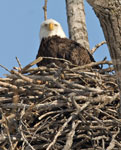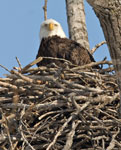
Bridging the Gap
Video surveillance technology has a place in preserving nature
- By Kris Rangarajan
- Jul 01, 2009
 Albert Einstein once wrote, "Look deep into nature, and then you will understand everything better." This sentiment once inspired past generations to look upon nature as a place of discovery, growth and personal development.
Albert Einstein once wrote, "Look deep into nature, and then you will understand everything better." This sentiment once inspired past generations to look upon nature as a place of discovery, growth and personal development.
Unfortunately, cities, boundaries and modern conveniences, such as television and cell phones, have thrown up obstacles between today's society and the intricate, living, breathing world that lives outside our virtual walls. The ultimate fear from this disconnection is that we are growing a generation that is desensitized, cynical and more prone to violence and distrust.
There is a great movement today intent on improving society's relationship with its roots. Local governments are turning to technology as an answer to re-engage a disconnected public. The innovative use of video surveillance equipment in creating gateways to otherwise inaccessible regions of the planet serves as a brilliant example of harnessing the power of modern technology to create positive change.
To Observe and Protect
The Washington Department of Fish and Wildlife has been a champion in using technology to fuse nature and people. Located in one of the most beautiful and biologically diverse states in the nation, it is constantly using new technologies to study, record, photograph and document a variety of fi sh and wildlife species. The goal is to provide researchers with valuable data of the wildlife and inspire people to discover hidden treasures about the land, animals and themselves.
From its start with old-fashioned binoculars and human testimony, to photographs from cameras that needed processing, the WDFW has always been on a hunt to accomplish this objective as effi ciently as possible. In the early days of CCTV and video monitoring, simple bullet cameras and basic DVRs were installed around the state's wildlife habitats as a way to go beyond just capturing still images to motion video; but this method proved to be cumbersome, requiring manual retrieval of video footage from the monitoring sites.
The advent of modern and affordable digital video surveillance technology and Web-based information sharing created a new platform through which the WDFW could completely revolutionize its observation process. With the right equipment, not only could they easily record video footage, they could broadcast the video images live to their biologists and the public. A new video project based on the advances in video surveillance, the WildWatchCams, was then created.
Unique Demands
The WDFW came up with specifi c requirements for their new project. The solution had to be cost-effective. "Everything needed to be done on a shoe-string budget," said Chuck Gibilisco, biologist and the coordinator of the WildWatchCam video project. The researchers wanted the ability to remotely observe and record video footage of the wildlife from a safe, non-intrusive distance. They wanted easy retrieval and access to the video footage. Their current DVR needed to have the hard drive swapped out every two weeks on location, which was a task given the expansiveness of the state of Washington and disturbed the wildlife environment.
The system needed to be extremely user-friendly, as biologists who were not experts in surveillance equipment would operate it. Once the requirements were compiled, Phil Turner, president of Olympia Systems Inc., a leading authority in Washington on video surveillance as well as an avid enthusiast of the state's wildlife, was entrusted to fi nd the perfect solution.
Turner evaluated many different video surveillance systems available in the security market and decided on the AVerMedia family of DVR and NVR surveillance systems. "We came across AVerMedia surveillance systems at the ISC West tradeshow in 2006 and found that their systems were cost effective and satisfi ed all of WDFW's needs," Turner said.
He especially liked the fact that the DVRs were capable of broadcasting video footage over the Internet and that the footage could be easily downloaded remotely. This eradicated the need for on-site visits to swap hard drives that had plagued the WDFW's biologists. Other features that proved invaluable were the intuitive graphic user interface and a patented visual search tool that allowed biologists to scour through weeks worth of video footage in minutes.
"We didn't have to look at endless amounts of redundant information," Gibilisco said. "The system only recorded pertinent events that we could easily see and access through their search tools."
A Natural Fit
So far, the WildWatchCam project has video surveillance cameras and powerful DVRs quietly and vigilantly observing many of the different species of wildlife in Washington state. The newest installation has been of a seal haul-out that uses high-performance PTZ cameras connected to a DVR.
"Biologists are able to observe more than 300 to 400 harbor seals and their behaviors as never before," Gibilisco said. "The biologists were able to quickly grasp the AVerMedia graphic user interface in minutes and were using the tool to get up close and personal by using the PTZ controls without disturbing the animals. Students working with the biologists also were able to easily export the footage onto CDs/DVDs, which were taken home for further study."
Since the WildWatchCams have been installed, the host site receives more than 100,000 visitors a month. As each month passes and with each new species surveyed, the amount of public support and interaction consistently climbs.
"When an eagle falls out of a nest, or the Internet site goes down, we hear about it almost immediately from the public," Gibilisco said. "Our mail is fi lled with letters from people from all walks of life, thanking us for allowing the public to be a part of this experience. This project gives everyone an opportunity to learn with the scientists and researchers. It also helps everyone to develop a better appreciation of the wildlife around us.
"It would seem that this fascinating and rare glimpse of an unseen world is slowly helping us tear down our virtual walls and inspiring us to reconnect with all the elements of our planet we call earth.
This article originally appeared in the issue of .